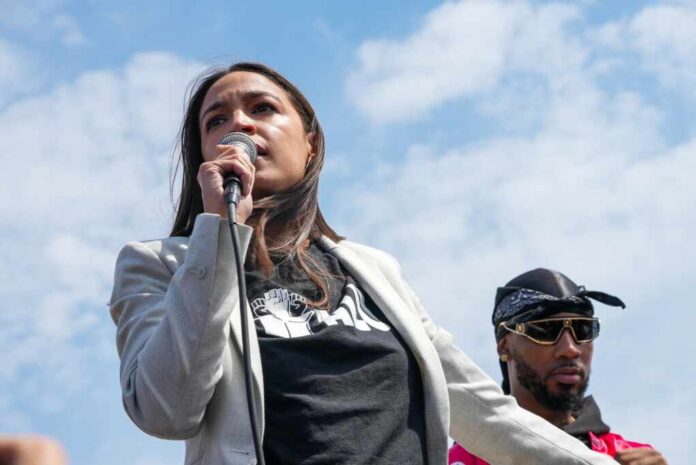
A Denver rally led by Sen. Bernie Sanders (I-VT) and Rep. Alexandria Ocasio-Cortez (D-NY) was promoted as a massive populist gathering, but location data analysis suggests the crowd may not have been what it seemed. The event, held in Civic Center Park, drew media attention after Sanders claimed it was the largest political rally in Denver since 2008. Yet only about 20,000 unique devices were recorded at the site.
The data was collected using advanced tracking software that measured not only attendance but past participation in political demonstrations. A large portion of the crowd had been seen repeatedly at prior protests. Analysts identified that 84% of attendees had participated in nine or more leftist demonstrations before the Denver event.
🚨🇺🇸 GPS DATA EXPOSES ASTROTURFING AT DENVER BERNIE-AOC RALLY
That massive Bernie Sanders and AOC rally in Denver? Turns out it wasn’t as “grassroots” as advertised.
Despite claims of 34,000 attendees, GPS data analysis reveals the real number was closer to 20,000—still big,… https://t.co/Mw3WLhxfWk pic.twitter.com/V4dXwqumNT
— Mario Nawfal (@MarioNawfal) March 23, 2025
Approximately one-third of the crowd had a track record of showing up to more than 20 such gatherings. This includes past rallies supporting Kamala Harris, pro-Palestinian events and Black Lives Matter protests.
Seruga’s team found that attendees were closely associated with left-wing groups that often organize and coordinate event turnout. These include Rise & Resist, the Disruption Project and Troublemakers. Most of these groups receive backing through ActBlue, and some have financial links to government-aligned funders like USAID.
GPS—Here we go again, there were 20,189 devices. Still a large crowd but not even close to the 30,000 quoted in Denver newspapers nor the 34,000 quoted by Bernie Sanders and AOC.
84% of the devices present had attended 9 or more Kamala Harris rallies, antifa/blm, pro-Hamas,… https://t.co/zQuvc0ATx5
— Tony Seruga (@TonySeruga) March 23, 2025
The presence of professional protest organizers undermines the narrative that the rally reflected a surge of support from everyday Americans. Instead, it mirrored earlier efforts by Democrats to generate artificial crowd sizes during campaign events, as seen in Harris’ presidential run.
Crowd counts based on drone footage circulated quickly online, but the GPS analysis provided a more detailed look into who actually attended. Each device was cross-referenced with prior location data, social connections and event attendance to confirm affiliations.
BREAKING: 🚨 GPS data reveals Bernie / AOC turnout was NOT organic.
➠ 84% of the devices present at the Bernie / AOC rally in Denver attended 9 or more Kamala Harris rallies, antifa/BLM, pro-H-mas and pro-Palestinian protests.
➠ 31% of the devices had attended over 20.… pic.twitter.com/WQ1FJDEiKn
— mandala (@mandala_mandy) March 23, 2025
The rally occurred shortly after new polling data showed a steep decline in Democratic approval ratings. CNN reported party support at its lowest level in years, prompting accusations that the rally was meant to stage an illusion of rising popularity.
One of the groups tracked in the analysis — the Disruption Project — was noted for operating without clearly defined legal status.
🚨BREAKING: GPS data shows that AOC and Bernie Sanders lied about the size of their crowd and lied about the crowd being organic.
— Philip Anderson (@VoteHarrisOut) March 24, 2025
That massive Bernie Sanders and AOC rally in Denver? Turns out it wasn’t as “grassroots” as advertised.
Despite claims of 34,000 attendees, GPS data analysis reveals the real number was closer to 20,000—still big, but not record-breaking.
More revealing? A whopping 84% of… pic.twitter.com/pEQqBIpboB
— Johnny Midnight ⚡️ (@its_The_Dr) March 24, 2025

























